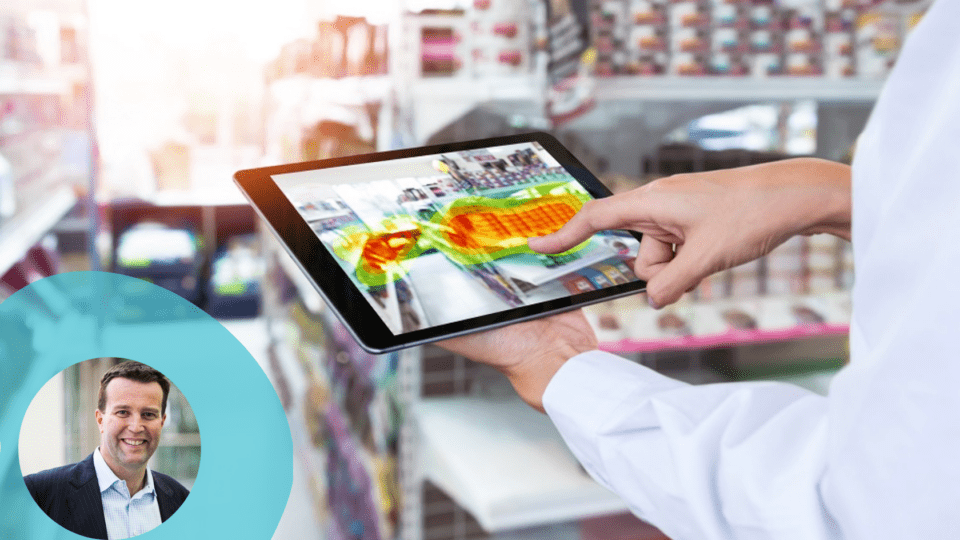I’m sure you’ve heard the expressions, “what goes around comes around,” and “what’s old is new again.” These are certainly applicable to what we’re seeing in the retail industry right now. No, I’m not talking about the revival of the 90’s poorest fashion choices.
We’re seeing a resurgence of retailers placing focus back on their physical stores. Every day, the latest retail headlines are focused on the entrance or expansion of physical retail environments, including Kohl’s, Toys ‘R’ Us, Mizzen+Main and more.
Many of these retailers have added several technologies to their arsenal to boost the in-store shopping experience for the customer and to better understand the customer journey to and through their stores. However, most are still relying on legacy traffic counting solutions that don’t measure some of the important metrics that retailers need.
Historically, traffic counting has been limited to entry and exit traffic, whether that be through beam-breakers, cameras or other devices. Whilst helpful for some basic measures, here are some others that fill in the gaps left behind.
Advertisement
Passer-by traffic.
Right now, most retailers lack information about the number of potential customers passing by their stores on any given day. This data is crucial to evaluating the effectiveness of strategies to bring in customers, from store design and layout to signage.
Understanding passer-by traffic allows retailers to optimize their approach, ensuring that window displays and marketing efforts are effective. It also helps property teams to understand whether the rent they’re paying is justified by the amount and quality of the traffic they’re getting past their stores.
Proofing point.
Customers who try before they buy are seven times more likely to purchase than those who don’t, and their basket size is on average 25% higher. The majority of a consumer’s buying journey happens well before they enter the store, and in many cases they are solely coming to see and feel a product that they’ve already mostly decided on.
Historically, proofing points, like fitting rooms, have been blind spots to retailers. They don’t know how many people enter the fitting rooms and of those people, how many make a purchase. With this data, retailers can offer more training and incentives for associates to get customers to proofing areas. They also can make sure they have the right number of proofing point areas to fulfill the need.
Active shoppers.
Labor optimization is more critical than ever as foot traffic recovers to pre-COVID levels. Understanding customer behavior after entering the store is essential. Metrics such as dwell time and bounce rates can help optimize staffing for improved sales conversion. Retailers can enhance the in-store experience by tailoring staff deployment based on foot traffic, ultimately creating a more personalized and efficient shopping environment. High-performing retailers are replacing traditional heat maps with a focus on understanding the dynamic customer journey, analyzing foot traffic movement and understanding its impact on basket size and purchasing decisions.
The Privacy Conundrum
This all sounds great, but how is it achieved while remaining compliant with current data and privacy regulations? Shoppers themselves also are becoming increasingly aware of, and concerned with, cyberattacks and data breaches.
It’s important for retailers to lean into this when investing in solutions and ensure they are taking into consideration solutions that enable them to understand the customer journey while upholding privacy.
High-Performing Retailers Understand Foot Traffic Through the Whole Sales Funnel
Approximately 30% of all shoppers head to the store just to browse, and retailers that can convert those browsers into buyers will have the competitive advantage. However, they should do so strategically.
Retailers are stuck between wanting to know more about their business and being overwhelmed by data. This significantly limits their ability to make data-driven decisions. Because of this, it’s important for retailers to focus on a few key areas that will make a difference, rather than heading down a data rabbit hole that is going to be either too difficult to execute or won’t deliver value.
Understanding the customer journey to and through a retailer’s stores is critical to improving performance, and high-performing retailers that challenge the traditional traffic counting strategies and leverage new technologies to help them optimize their stores in historically blind areas will be better set to capture value and beat their competition.
Tom Gleeson is the CEO of Kepler Analytics, a traffic counting solution that enables retailers to accurately measure storefront and fitting room conversion rates. He is an experienced global executive with a strong track record in transformation and strategic leadership. Prior to joining Kepler Analytics, Gleeson was in the Royal Australian Air Force where he served as a fighter pilot, flying instructor and executive, including several operational deployments. He later worked as a management consultant at McKinsey & Company, ran his own consultancy, ran several startups, and held multiple C-suite and leadership roles. You can find him on LinkedIn.




